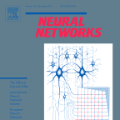Manipulation tasks, like loading a dishwasher, can be seen as a sequence of spatial constraints and relationships between different objects. We aim to discover these rules from demonstrations by posing manipulation as a classification problem over a graph, whose nodes represent task-relevant entities like objects and goals, and present a graph neural network (GNN) policy architecture for solving this problem from demonstrations. In our experiments, a single GNN policy trained using imitation learning (IL) on 20 expert demos can solve blockstacking, rearrangement, and dishwasher loading tasks; once the policy has learned the spatial structure, it can generalize to a larger number of objects, goal configurations, and from simulation to the real world. These experiments show that graphical IL can solve complex long-horizon manipulation problems without requiring detailed task descriptions. Videos can be found at: https://youtu.be/POxaTDAj7aY.
翻译:操纵任务,比如装上洗碗机,可以被看作是一系列空间限制和不同对象之间的关系。 我们的目标是通过将操纵作为图表的分类问题,将示范规则作为分类问题,图形的节点代表了与任务相关的实体,如物体和目标。 我们提出一个图形神经网络(GNN)政策架构,以解决演示中出现的问题。 在我们的实验中,在20个专家演示中进行模拟学习(IL)培训的单一GNN政策可以解决阻隔、重新安排和洗碗机的装载任务; 一旦该政策学会了空间结构,它就可以向更多的对象、目标配置以及从模拟到真实世界加以推广。这些实验显示图形IL可以在不需要详细的任务描述的情况下解决复杂的长方圆操纵问题。 视频可见于 https://youtu.be/POxaTDAj7AY。



